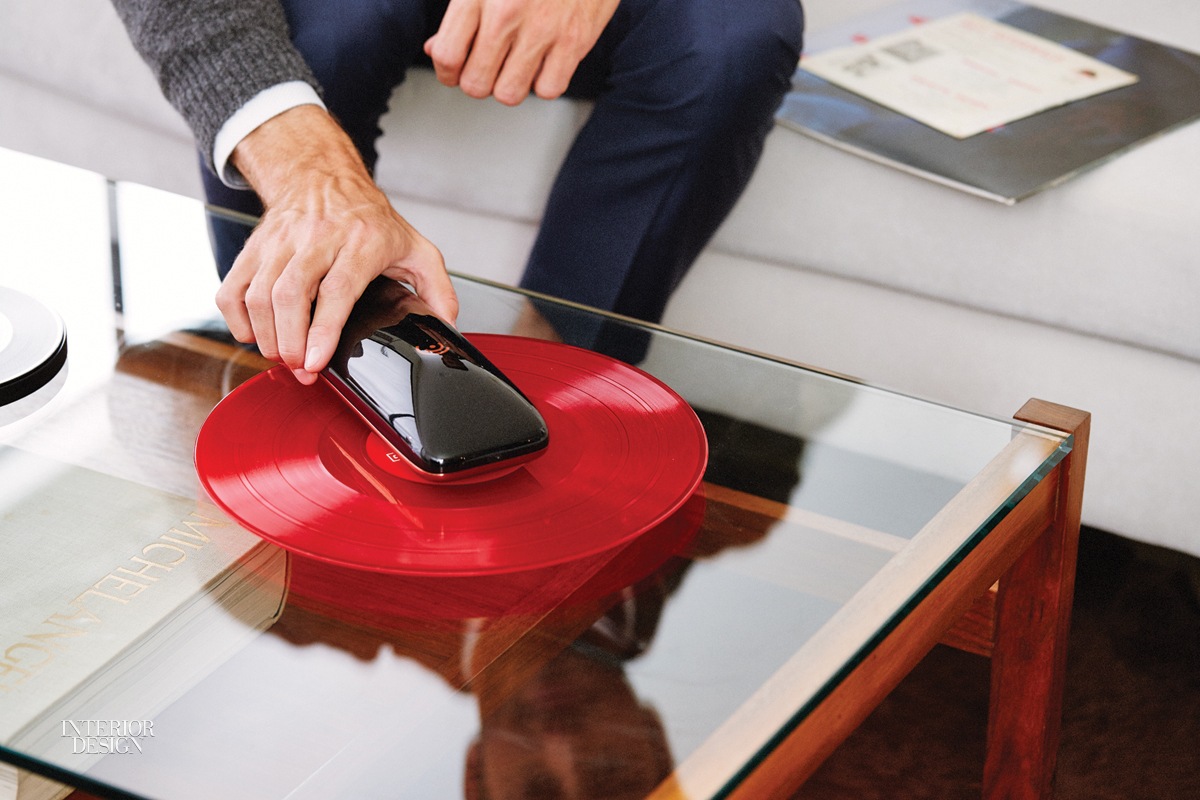8 Ways Technology Is Disrupting the Design Industry
Disruptive innovation comes in every dimension–3-D printing is just the start.
1. RISE Pavilion by DeFacto

A wunderkind of 3-D printing, Leandro Rolon led his firm, DeFacto, in a successful attempt to break a Guinness World Record for the largest 3-D printed structure. His 13-by-36-foot RISE Pavilion—a collaboration with RISE, a Beijing institution that teaches English to children—was composed of almost 5,000 biodegradable polymer blocks. After it was dis-assembled, each student received a block to further explore its upcycling potential. Suggested uses: planter or lampshade.
2. Casa d’Espanya by Gould Turner Group

A trip to Spain’s Alhambra inspired Casa d’Espanya, an installation by Gould Turner Group that debuted at Nashville’s Cheekwood botanical garden as part of its “International Playhouse” exhibition last spring. Moorish-inflected motifs appeared in porcelain mosaic on the outer structure. Inside it stood a 3-D printed open-cell thermoplastic sculpture—which is now making a second appearance at suburban Franklin’s O’More College of Design. Qué bueno.
3. “3-D Printing: The Good, the Bad and the Beautiful” at National Centre for Craft & Design

Complex questions are often raised by new technologies, and 3-D printing is no different, with concerns ranging from authorship to environmental impact. “3-D Printing: The Good, the Bad and the Beautiful,” at the National Centre for Craft & Design in Sleaford, U.K., through April 23, explores these issues through dozens of objects, from wall tile to jewelry. Lynne MacLachlan’s nylon Gego bangles, for example, appear in the “beautiful” category.
4. Lace LED by Margot Krasojevic

Working on such conceptual projects as a hydroelectric-powered floating prison, Margot Krasojevic is clearly committed to sustainability. A recent recycling effort is more real-world. Polymers from food containers and offcuts from 3-D printers became the raw materials for another round of 3-D printing, which yielded a lacy form interwoven with optical fibers. The resulting Lace LED pendant fixture, printed at different scales, will be available on the Margot Krasojevic Architects website in May.
5. Parque de Castilla–La Mancha: Bridge by Barcelona’s Institute for Advanced Architecture of Catalonia

No, you’re not seeing things. That really and truly is a 3-D printed pedestrian bridge. Spanning a pond at Madrid’s Parque de Castilla–La Mancha, the 39-foot-long structure is micro-reinforced concrete. The designers hail not from the capital but from Barcelona’s Institute for Advanced Architecture of Catalonia.
6. DuoSkin by Cindy Hsin-Liu Kao


Want your tattoo to do more than just look cool? Massachusetts Institute of Technology student Cindy Hsin-Liu Kao is on it. With the MIT Media Lab and Microsoft Research, the PhD candidate has developed DuoSkin, functional interfaces that adhere to human skin. A flame changes colors in response to certain emotions, or silvery squares serve as a mouse pad.
7. Love Turntable by Fuseproject



Old-school meets new with Fuseproject’s Love Turntable. Inspired by the sculptural forms of musical instruments, a component with a linear tracking system spins on top of a vinyl record set on a stationary base, and the music is then streamed via Bluetooth and WiFi to speakers or headphones. A Kickstarter campaign raised more than $850,000 to produce the smartphone-controlled device, slated to be released this year.
8. “Hello, Robot. Design Between Human and Machine” at the Vitra Design Museum




It’s a party. And it’s taking place at the Vitra Design Museum in Weil am Rhein, Germany, through May 14. Luckily, the guests don’t need to sleep. “Hello, Robot. Design Between Human and Machine” is a gathering where Anouk Wipprecht’s 3-D printed cocktail dress, with its sensors and movable arms that respond to outside stimuli, might engage in a stimulating conceptual conversation with ABB’s human-size robot, Yumi.


